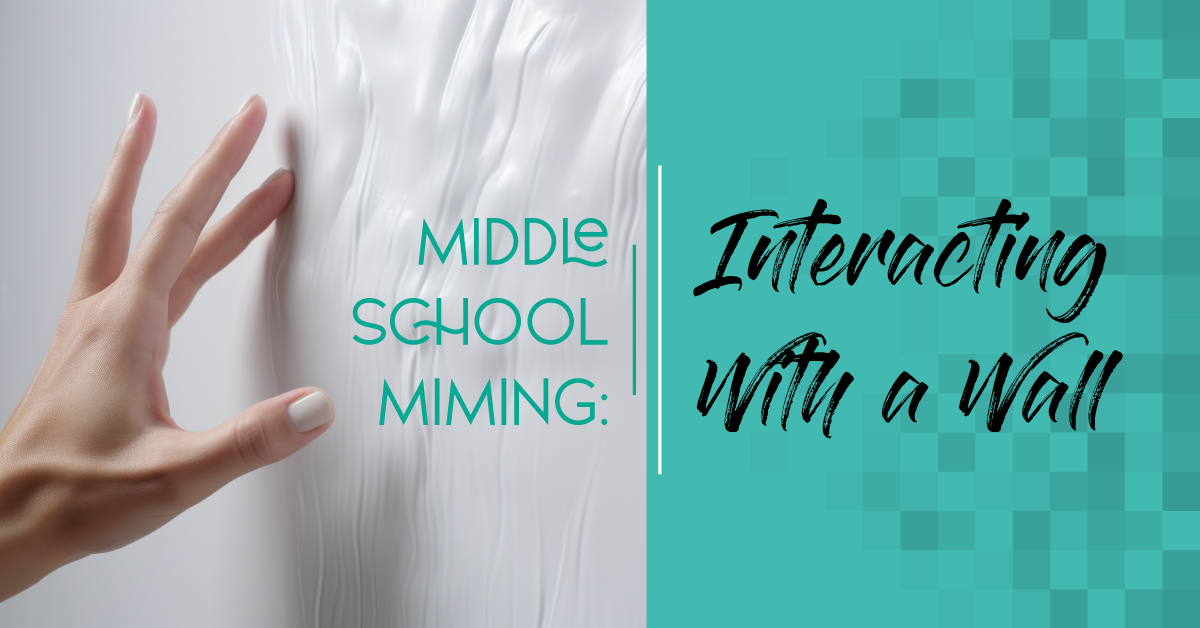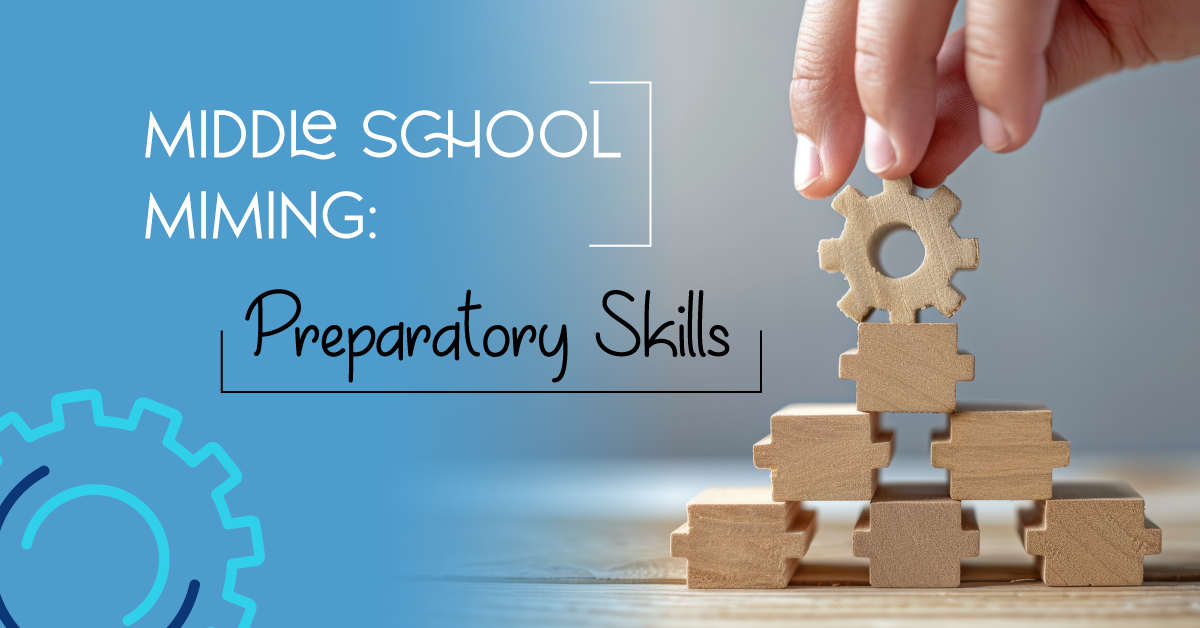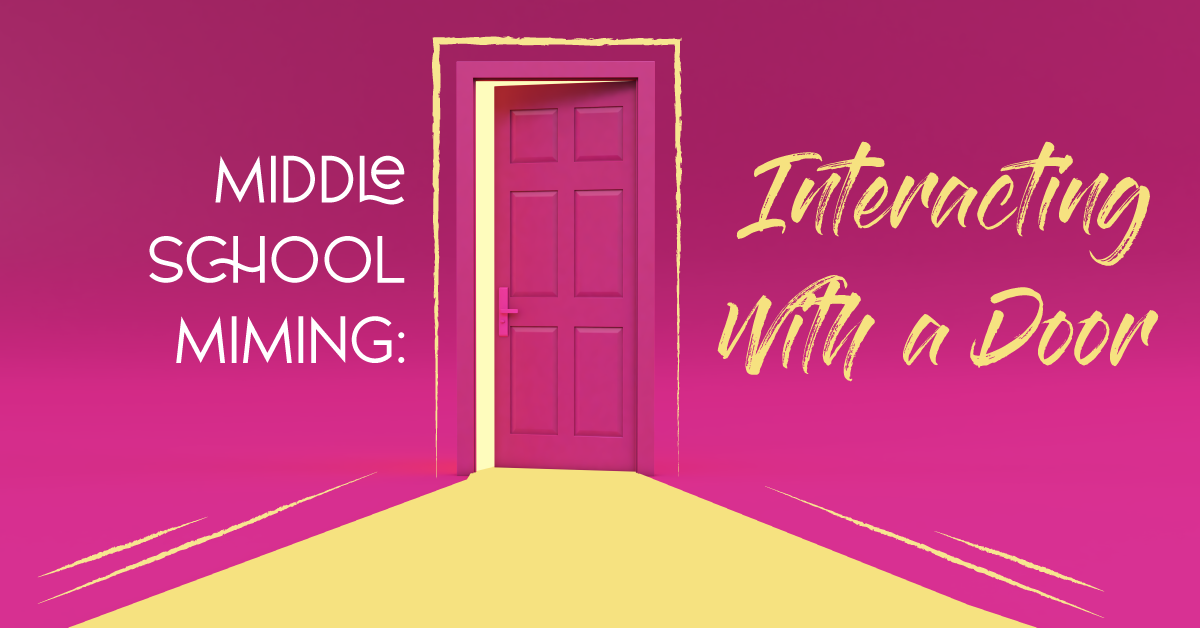With Liberty and Justice For All is a powerful, timely piece that brings student voices to the forefront at a BLM protest - where stories are shared, community is built, and the stakes are real.
Middle School Miming: Interacting With a Wall
We’ve all seen the classic “mime stuck behind an invisible wall” routine, and when you mention miming to students, typically they’ll immediately start waving their hands around in that fashion. This sequence takes a lot of focus and physical stamina, even though the movements are small. The more deliberate and mindful the movements are and the more concentrated the students are on their eye focus, the more “real” the sequence will appear to the audience. Let’s get started.
1. Practice.
Have your students start by practicing interacting with an actual wall. Have them stand facing a wall in the drama classroom, about 12–15 inches away, depending on how long their arms are. They’ll need to be able to place their palms flat against the wall while keeping a bend in their elbows; they shouldn’t be stretching to reach it.
Have students stand with their hands by their sides. Look at the spot on the wall where you will place your right hand. Take your right hand, slowly raise it to around face height, softly spread the fingers apart, and place the palm against the wall firmly and with intent. Now, look at a different spot on the wall where you will place your left hand. Keeping the right hand on the wall, raise the left hand to face height, spread the fingers apart, and place that palm firmly against the wall. Feel the wall against both hands; the wall is strong and unyielding, and even if you press hard against it, it doesn’t move.
Keeping the left hand on the wall, look at a new space on the wall, remove the right hand, and place it firmly on another place on the wall. Keeping the right hand on the wall, remove the left hand and place it somewhere else on the wall. Repeat the motions of removing one hand from the wall and placing it on another part of the wall, while always keeping one hand against the wall and looking towards the new spot on the wall where you will move your hand. Look, remove, place, repeat. Keep movements slow and purposeful — removing and placing, rather than sliding.
To end the routine, take one hand off the wall and let it rest naturally against your side. Then, take the other hand off the wall and let it rest against your other side.
2. Visualize.
Have students come away from the walls and find a place around the drama classroom, facing you. Students will stand in neutral positions, with feet flat on the floor and arms resting at their sides.
Have students close their eyes or gaze softly forward. Using their visualization skills, students will picture in their mind’s eye the wall they were just interacting with. Imagine the wall — what colour is it? What material is it made of? How thick do you think it is? How far away from the wall are you? (It should be the same distance as when you were interacting with the actual wall.) Keep that image clearly in your mind as you move to the next step.
3. Make the unreal, real.
If students have their eyes closed, have them open them now. Look straight ahead and “see” in your mind’s eye the wall in front of you. Start the same motions as when you practiced touching the actual wall: look towards where you will place your right hand (around face height), slowly raise your right hand, softly spread the fingers apart, and firmly place the palm in the air “against” the invisible wall. This first step is important, as it establishes the parameters of where the wall is in relation to the student. The wall can’t move around or it will become unreal to the audience.
Keeping the right hand in place “on the wall,” look to where you’ll place your left hand, raise the left hand, spread the fingers apart, and place that palm firmly in the air “against” the invisible wall. Make sure that the left hand is placed at the same distance away from the body as the right hand, or the “wall” will be crooked. Students might notice that their fingers or palms feel tingly or warm — they’re getting the blood flowing from moving their hands so purposefully!
Repeat the motions of looking at the new place on the wall, removing one hand from the wall and replacing it on another part of the wall, while always keeping one hand against the wall. Look, remove, place, repeat. As always, keep the movements slow and purposeful. Keep the distance between your body and the “wall” consistent at all times. To end the routine, take one hand off the wall and let it rest naturally against your side, followed by the other hand.
If necessary, have students shake out their arms and hands afterwards to release any built-up energy or tension.
4. Perform.
Split students into small groups and have them perform this sequence in front of the rest of the class, to demonstrate what they’ve been practicing. Give students a specific number of hand movements to perform, or have them keep moving until you ring a bell or make a gesture to indicate to them to end the routine.



